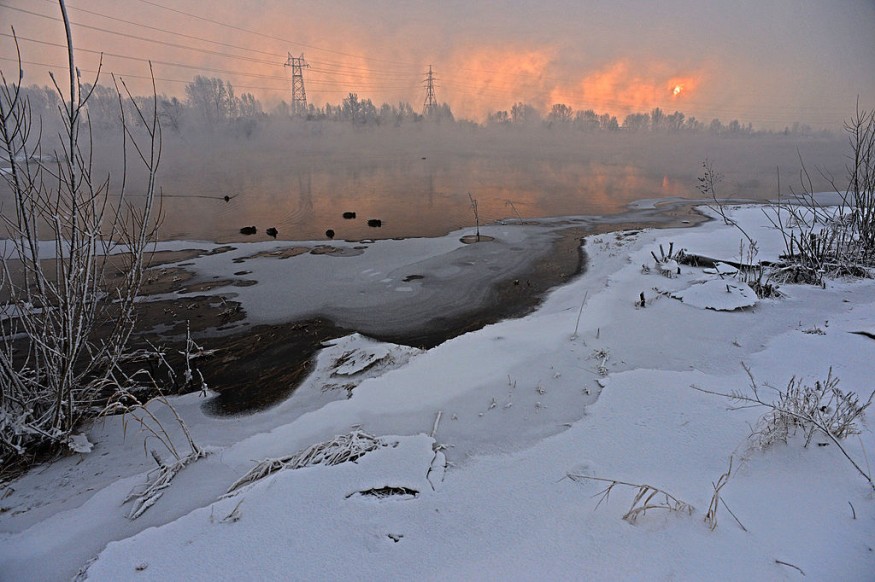As the Northern regions of the world continue to warm faster than the rest, Arctic Ocean may no longer host ice, a phenomenon referred to as "Arctic amplification" by scientists.
To understand the impacts of warming world and melting ice in the Arctic, climate scientist and associate research professor of dendrochronology Irina Panyushkina from the University of Arizona Laboratory of Tree-Ring Research, who also grew up in Siberia, led identifying the extent of impacts using stream flow data from Yenisei River-the largest freshwater river that flows into the Arctic Ocean.
Previous studies say the impact freshwater has had on the Arctic includes warming air temperature, and seasonal precipitation changes or snowpack, but recent researches including Panyushkina's study suggests that the primary drivers of Arctic amplification are permafrost degradation and forest fires across southern Siberia.
Looking 300 years back

The Yenisei River in Tuva, southern Siberia, has changed over the last few hundred years. To overcome this, Panyushkina's team used tree-ring data to double the number of years' worth of the stream flow data they had, allowing them to look back 300 yearshas changed over the last few hundred years.
To measure this, Panyushkina's team used tree-ring data to double the number of years' worth of the stream flow data from the upper reaches of the Yenisei River, allowing them to go back as far as 300 years.
Annual stream flow information is commonly used to determine the average changes in stream flow trends, but Panyushkina and her team specifically investigated winter stream flow to understand Arctic ice melt.
"We found an unprecedented increase in the winter flow rate over the last 25 years," Panyushkina said. This winter flow rate is nearly 80% above the average seen over approximately 100 years.
"In contrast, annual flow fluctuated normally during the 300-year period, with only a 7% increase over the last 25 years," Panyushkina said. The study further implied that two sources of groundwater - rivers and aquifers - speed up Arctic ice melt at alarming rate.
Combined effects of permafrost degradation and fires
"We know the frequency and intensity of forest fires in Siberia have been increasing," Panyushkina said.
"When fires happen in forests with permafrost, there is deep thawing under the fire event, and the affected area often doesn't recover for up to 60 years. When we have large-scale fires and long-burning fires and more frequent fires, we're maybe hitting the critical point when permafrost degradation cannot return to normal. Forest fires are also another process that increases connectivity between aquifers and stream flow."
These combined effects are very strong at the Yenisei River basin, with more fresh water and heat flowing into the Arctic Ocean in recent decades.
"Research interest in the region is booming because the surface temperature is warming much faster here than anywhere else in the world," Panyushkina said, referring Siberia as "hot spot for climate research".
"I'm also very interested in knowing the impact of an ice-free Arctic on the surrounding landscape. Humans have never seen an ice-free Arctic before, ever. My mind still cannot comprehend how the Arctic Ocean can be free of ice."
© 2025 NatureWorldNews.com All rights reserved. Do not reproduce without permission.





